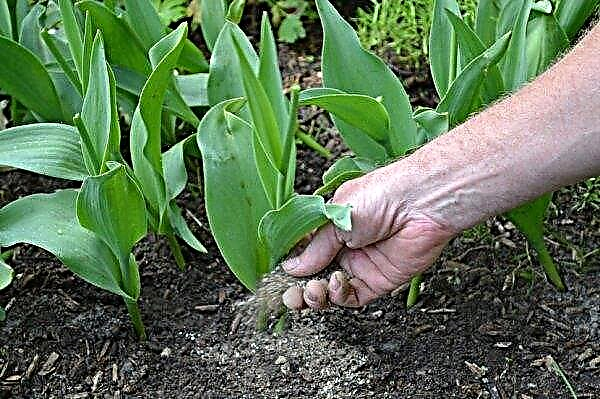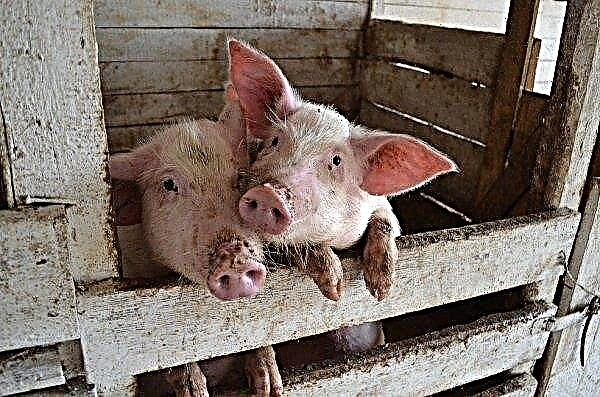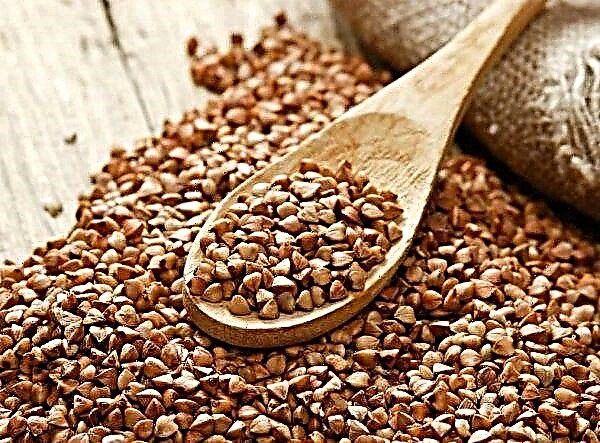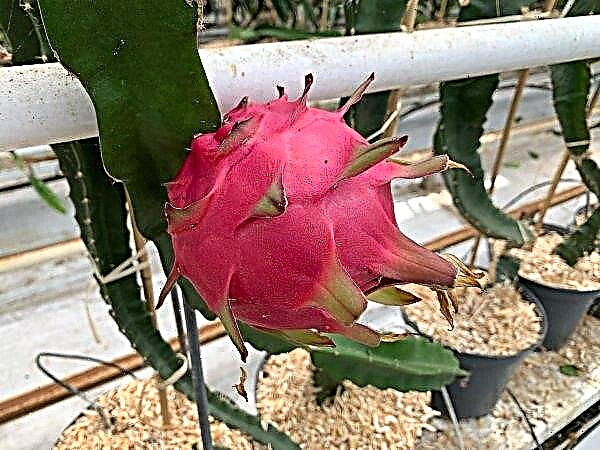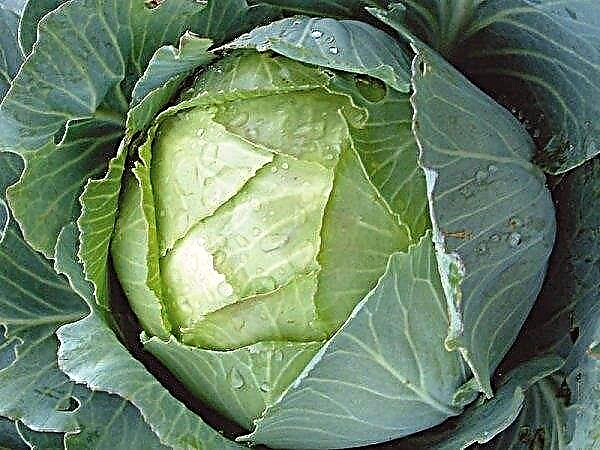Each beekeeper in the process of his activities faces a serious problem - diseases of bees or entire bee families. The article discusses the most common diseases, methods for their treatment and preventive measures.
How and when bees get sick
Diseases that cause significant harm to bee families are divided into:
- Contagious - appear when the causative agents of the disease enter the body of the bee. Healthy individuals become infected from the sick in various ways.
- Infectious - These are diseases that arise due to improper care, feeding, maintenance.
Infectious diseases, in turn, are divided into:
- Invasive (parasitic) - a group of diseases caused by parasites of animal origin (worms, arthropods, etc.).
- Infectious - diseases caused by pathogenic microorganisms, viruses.
Important! Over its entire life, a bee produces about one twelfth teaspoon of honey.
Diseases occur at all stages of the development of the bee - from the egg to the working insect. Based on this, two more groups of diseases are distinguished: brood and adult bees.
European and American foulbrood
The nature of these diseases is an aggressive infectious lesion of the body. European foulbrood is a disease of open brood of bees. Larvae die at the age of 3-4 days. A specific apple smell appears. The infection is introduced through the introduction of feed, manipulation of inventory, adults. When the first signs of the disease appear, urgent preventive treatment of the entire apiary is necessary.

The following preparations are used, dissolved in a syrup based on sugar and water, in dosages according to the prescription of a veterinarian:
- streptomycin;
- biomycin;
- tetracycline;
- neomycin;
- erythromycin.
Medical top dressing is carried out three times, with a five-day interval, while the old cells are gradually replaced with new ones. American foulbrood is a disease of printed brood of bees that causes a spore-forming bacillus. It is transmitted mainly through infected families. The larvae rot, turning into a mass with an unpleasant smell of wood glue. Treatment is the same as in the European foulbrood, but the rate of top dressing for one hive is slightly larger.
Did you know? By the smell, bees can identify mines, explosives, so these insects are on the "official service" in the Pentagon.
Varroatosis
Varroatosis is a disease caused by the tick of Varrora Jacobsoni. The insect parasitizes on the adult inhabitants of the hive, but especially on the drone brood. The pest is fixed on the body of a bee (uterus, drone) and sucks the hemolymph.

The fight against varroatosis consists in the thorough destruction of ticks by thermal treatment of houses, the use of chemicals. Untimely taken measures and treatment lead to the complete death of the bee family.
Ascospherosis
Fungal disease of bee and drone brood. Its danger is due to the fact that adults do not suffer from it, but are carriers. You can bring controversy when installing (rearranging) the framework for healthy families from infected.
Spores are activated in a humid but not hot environment. The disease is determined by the number of altered larvae, cells, which are more concentrated on the edges of the cells. Worker bees clean their cells by throwing out lime mummies.

Measures to combat the disease look like this:
- hives inside are treated with a blowtorch;
- disinfect equipment, protective clothing;
- apply folk remedies based on plants. Dressing with broth of horsetail with syrup one to one for five consecutive days at the rate of 1 liter per hive. Powdered from dried yarrow bee streets. Chopped garlic, wrapped in gauze, is placed on top of the frames. A few days later they change to fresh;
- chemical preparations are effective, but when used they should not be allowed to get into honey. "Dicobin", "Ascocin" is used according to the instructions.
To prevent ascospherosis, it is worthwhile to take care of adequate ventilation of the hives, do not use cotton-based heaters, and regularly mow the grass around the hives. All measures should be aimed at preventing accumulation of moisture.
Septicemia
Refers to infectious diseases of adult bees. It is characterized by the loss of the ability of bees to fly. After death, the tissues of dead insects fall into pieces, acquiring a black color. The diagnosis is established by bacteriological examination. The provoking fact of the disease is an excessive level of humidity in the hives.
Treatment of septicemia consists in transferring diseased bee colonies to dry, insulated hives, followed by top dressing with tetracycline antibiotic syrup (300,000 units). Top dressing is carried out three times, each after 6 days. An alternative to antibiotics is to add citric acid to the syrup.
Nosematosis
The invasive disease that affects adults in families is caused by a unicellular parasite. Infection occurs through the entry of spores into the body through food. The onset of the disease coincides with the end of winter, and the peak of the disease is the end of spring. Long wintering, adverse conditions, diet (honeydew honey) contribute to nosematosis.
As a prophylaxis, add the bottle of Fumagillin to 25 liters of sugar syrup, with which honeydew should be replaced. In spring, insects are moved to clean beehives, and honeycombs are revised. The treatment is carried out using the four top dressing method with sugar syrup with Fumagillin (ratio, as with prophylaxis), once a week, at the rate of 200 g per bee hive.
Paratyphoid (salmonellosis)
The disease occurs as a result of infection of the family with bacteria brought into the hive with water from a dead reservoir. It is not a fact that insect infections will necessarily occur, at risk are weakened families that weaken even more in a short time and die. The treatment is carried out by fertilizing Novarsenol in sugar syrup. Preventive measures include a complete diet and keeping families warm.
Viral paralysis
The disease affects the nervous system of the insect, paralyzes the organs. The virus carries a tick that parasitizes on bees.

Moreover, the family is infected from infected individuals to healthy ones:
- the infection persists in the corpse of an insect up to 2 years;
- the disease is more often manifested in the summer, proceeds both in acute and in chronic forms. If paralysis is detected, the family should be isolated.
In order to prevent the development of the disease in the spring months, the bees are fed a bacterial endonuclease (100,000 units) with the addition of 1 g of magnesium chloride per liter of water. In the first half of summer, fertilizing with sugar syrup is done with the addition of tetracycline and biomycin. Using a sprayer, the honeycomb is treated with pancreatic ribonuclease 1 time per week for a month.
Diseases caused by protozoa
Pests of bees cause irreparable damage to beekeepers and can lead to the death of an entire apiary. They can appear due to non-compliance with the rules of care, lack of prevention and improper breeding of bees.
Arachnoses
Arachnoses are the common name for tick-borne diseases.
Important! Arachnoses are diseases dangerous to humans and animals.
These include:
- acarapidosis;
- exoacarapidosis;
- pemotosis;
- varroatosis
- euvarrosis
- tropilelapsosis.
It is recommended to treat arachnoses with the use of such drugs (according to the instructions) as “Phenothiazine”, “Varroaxan”, “Folbeks”, “Sanvar”. Use oxalic and formic acids.
Entomoses
Entomoses are a group of diseases caused by parasitic insects on bees (for example, lice).
Among bee entomoses, the following are most common:
- browulosis;
- cenotainiosis;
- physocephalosis.

Braulez - caused by wingless tiny insects - lice. They attack adults, deplete honey bees. When the uterus is damaged, the egg laying process is disrupted. Methods of control - the use of folbeks or smoke treatment of bee colonies. Shag, tobacco should be used as a source of smoke.
Senotainiosis - occurs when larvae are deposited by a fly cenotainia on the surface of a bee body. There is an infection. After the bee dies in a few days, the larvae develop in its corpse, and then are buried in the ground. Control measures include the use of pickled baits, the burning of dead bees. Since parasites winter in the ground, it is necessary to plow the land in the apiary in late autumn.
Physocephalosis is a disease in which the larvae of a round-headed fly parasitize in the body of a bee. The disease proceeds almost like the previous one, only with the difference that the larva of a fly, having completed its development in the body of a dead bee, “leaves” it with a fully formed insect, bypassing the stage of development in the ground. Physiocephalosis control measures are similar to cenotainiosis. In the latter case, the earth around the hives is carefully rammed.
Bee infectious diseases
This is a group of diseases caused by violations of the content, feeding, breeding. Not transmitted to healthy bee families from patients.
Consider the most common:
- Protein Dystrophy. It occurs due to the absence or low quality of bee bread, an excess of sugar in the feed, metabolic disturbances in the bee's body. Insects become smaller, do not develop. Stop laying eggs. Larvae are weak, elongated. Most die. To avoid the disease, it is necessary to provide the families with protein feed in sufficient quantities, additionally put the framework with the bee bread. You can use substitutes: a mixture of syrup with milk, dough from yeast, honey and powdered sugar.
- Chilled brood. The disease is characterized by brood death and the appearance of bee deformities as a result of hypothermia of the family. It usually appears in the spring. It arises due to poor insulation of the hives, with prolonged exposure to honeycombs with brood in the cold. To prevent the death of insects from the above disease, narrow the streets, insulate the nests, remove dead insects, and replenish the feed base.
- Sterile eggs. Eggs laid by the queen bee cease to develop. The causes of this disease are not fully understood. Bee families are weakening, as the larvae in the combs are not enough. Studies have shown that closely related breeding in apiaries to a greater extent encouraged queens to lay "empty" eggs. The situation can be changed by replacing the uterus with healthier ones, displaced from other places.
- Chemical toxicosis. The real scourge of beekeeping, due to the uncontrolled use of chemicals in agriculture, industrial toxic emissions. Bees are initially chemically exposed when collecting nectar and pollen. Further, all members of the family suffer from chemicals and pesticides. Poisoning can occur in a super acute, acute, chronic form.
Only preventative measures apply, which include:
- location of the apiary at a sufficient distance from industrial enterprises;
- family locations should be at least 7 km away from areas treated with chemicals;
- in the absence of such an opportunity, with potential danger, the hives are covered with fresh grass, branches;
- additionally put drinking bowls with water;
- make the internal treatment of the hives with an alkaline 5% solution, followed by washing with water.
What is sick brood
The most common and studied ailments in which bee brood suffers are rotten rot (European and American), varroatosis, ascospherosis, aspergillosis, saccular brood. The first four diseases are described in this article; we will focus on the last two. Sacked brood is a viral disease that is widespread.

The disease occurs in the spring and summer months with prolonged cold or hot periods, with malnutrition. Distributed between families. Larvae are elongated, hook-shaped, bag-shaped. They die on the 5-7th day after infection. The diagnosis is established in the laboratory. As medical preparations, Bactopol is used - three times in one week.
Aspergillosis is an infectious disease. Both brood and adult individuals suffer. The source is fungal spores that enter the hives with pollen or nectar. The disease develops rapidly in a humid environment. Larvae die 2–4 days after infection.
Important! The honey obtained by the family, where the diagnosis of bagged brood was confirmed, categorically cannot be fed to healthy bees.
Prevention measures include:
- ventilation and warming of houses;
- preventing thickening of grass around the hives;
- unsystematic antibiotic treatment;
- provide families with medicinal nutrition with sugar syrup with onion or garlic.
For treatment use drugs "Askosan", "Askovet", "Apiask", "Unisan", the drug "Bee".
Bee Disease Prevention
Preventive measures to prevent diseases and insect death include:
- Careful planning of the location of the apiary, taking into account the physiology of insects, the ecological situation, etc.
- Compliance with sanitary rules and standards in relation to inventory, clothing.
- Timely seasonal therapeutic feeding for preventive purposes.
- Remediation of beehives on an ongoing basis.

Beekeeping is a difficult and responsible occupation requiring deep knowledge and skills. A huge number of diseases of various etiologies to which bees are exposed at different stages of their development can significantly complicate the process of obtaining beekeeping products. But modern veterinary medicine has an enormous arsenal of drugs and treatment methods that allows you to keep the bee family in working condition.


